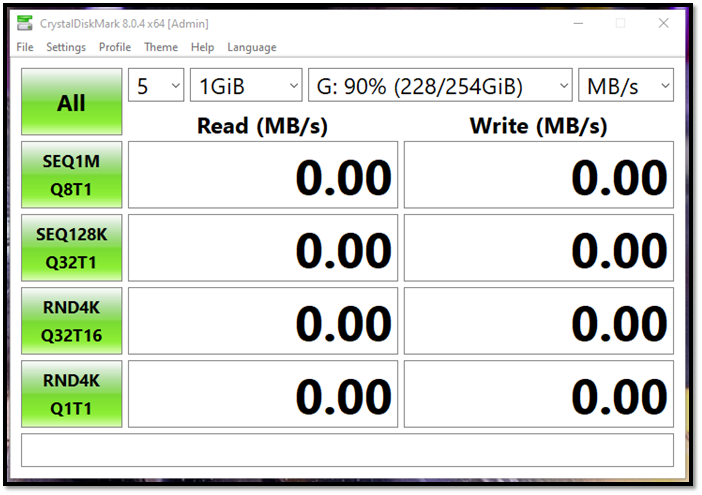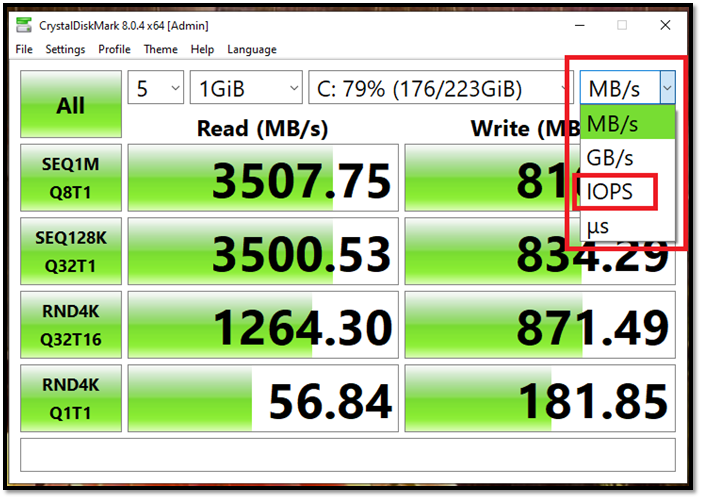What Is IOPS (Input/Output Operations Per Second) and How Do You Measure It?
IOPS is a performance measurement. So, how exactly do you figure it out?
Storage devices and networks employ IOPS measurement quite a lot. It can help characterize storage devices of all kinds, including solid state drives and hard disk drives. On top of that, it can also assess the speed of storage area networks.

So, how to explain IOPS meaning? How does it work, and how does it measure a storage device's speed? In order to understand its meaning, we have to dive deeper and analyze how to measure it. So, let's get started.
What IOPS Means?
IOPS meaning is Input/Output operations per second. This allows the user to measure and understand a storage device's read and write speed. It's pronounced like "eye-ops" in the world of technology, as it characterizes the speed of computer storage.
The usual storages checked by this measurement unit include:
- SSD – Solid State Drives
- HDD – Hard Disk Drives
- SAN – Storage Area Networks
In other words, it's a benchmarking unit that allows you to ensure your device's storage speeds are the same as claimed by the manufacturer. There are always discrepancies in these IOPS readings, as manufacturers test the said speeds in ideal environments.
Therefore, the performance seldom translates into real-world scenarios, such as applications, gaming, file copying, etc. That's why there are always differences when you check IOPS in real-time rather than the readings published by the manufacturers. Here's an example:

As you can see, the read and write speeds are 6684 and 4918, respectively. However, the manufacturer claims that this SSD has a writing speed of around 7000MBPS and a read speed of 5000MBPS. So, how does this discrepancy happen in IOPS?
The answer is within the manufacturer's claims. Most of such SSDs would claim to say UPTO 7000MBPS write and 5000MBPS read. Therefore, in ideal conditions, it may as well reach the claimed speeds. But, in real-world scenarios, the IOPS are more accurate.
IOPS Performance Characteristics
IOPS characteristics are as easy as they come. You can understand them by simply reading out what they mean. However, to make it easier for you, here's a list of common IOPS measurement types in storage devices:
| Measurement | What It Means |
| Total IOPS | Performance in all aspects, i.e., read/write |
| Random Write IOPS | The average performance of writing I/O operations of the storage |
| Random Read IOPS | The average performance of reading I/O operations of the storage |
| Sequential Write IOPS | The average performance of sequential writing I/O operations of the storage |
| Sequential Read IOPS | The average performance of sequential reading I/O operations of the storage |
Now, if you were to use a common tool to measure these characteristics of your storage device, it would look much different. In a consumer's computer, the disk-benchmarking tools would look usually like this:

Therefore, measuring IOPS requires you to understand the characteristics of a disk drive in a computer. Then, you can understand the measurements made by such IOPS tools to find out the overall speed of a physical drive.
How Do You Measure IOPS?
You can easily measure IOPS using an Iometer tool. It's a substantial I/O subsystem measurement tool that allows users to characterize storage drives in single and clustered computers.
Tell users that they can measure IOPS with testing tools like Iometer. However, IOPS in SSD, HDDs, and SANs are vastly different. For instance:
- HDDs use the standard equation, i.e., read/write per second
- SSDs depend on the internal controller, i.e., DRAM cache or NAND controller
- HDDs have higher latencies and slower read/writer times
- SSDs are much quicker in sequential read/write time; therefore, their performance in real-time applications is much better too
So, how exactly do you measure the IOPS of your storage? You'd have to download a disk measurement tool like Iometer.ORG or CrystalDiskMark. Once you do, here's what you need to do:
Step 1:Download and install the program
Step 2: Run it

Step 3: Pick the disk on which you wish to measure IOPS

Step 4: Let the tool measure it

Step 5: Analyze the final reading

As you can see from top-to-bottom of the scanned measurements, there are all sorts of IOPS readings, as we mentioned before. But, just for a recap, here's what you're looking at:
- All = Total IOPS
- SEQQ1M & SEQ12K = Sequential read and write
- RND4k = Random read and write
Therefore, this tool allows you to check in MBS. However, there's a little trick, and all you have to do is:
Step 1: Tap the top-right menu
Step 2: Pick IOPS instead of MB/s

And now, it'll show you the measurements in IOPS:

Therefore, it's easy to find the IOPS and the MB and GB per second of your storage device using any Iometer tool.
IOPS vs. Throughput
Throughput is the measurement metric of storage devices, allowing the users to figure out the amount of data a drive can flow. Compared to IOPS, Throughput is mainly employed in streaming services, such as image hosting websites and video files.
Since it's a storage metric that flows through continuously, it makes it ideal for streaming and videos.
IOPS, on the other hand, is the primary measurement of the speed of a storage device—as we've seen throughout this article. So, what exactly is the difference between them?
| IOPS | Throughput |
| Uses read/write operations per second | Uses transferred bits per second |
| Employs sequential data read/write | Uses megabytes per second to measure the speed |
| Ideal for physical storage | Ideal for network-based storage |
| Mainly employed in single or clustered computers | Used in high-data transfer such as big data, streaming, image hosting, etc. |
While both these measurements are common, IOPS gives you a much more accurate account of the speed within physical storage. Since Throughput is mainly industrial grade, it's employed by major corporations, streaming services, and data centers.
Bottom Line
We hope this helped you understand the importance of IOPS and how you can measure it. Not only did we analyze the importance of IOPS, but also its counterpart called Throughput. Therefore, use this article to further your knowledge about IOPS and measure it using the tools we suggested.
Related Articles
- Go Back to Previous Version of Windows in Windows 11 Even After 10 Days
- EFS (Encrypting File System): Good Helper to Protect Confidential Data
- How to Open Task Manager on Windows 10/11
- What is AMD CPU fTPM? Everything You Need to Know